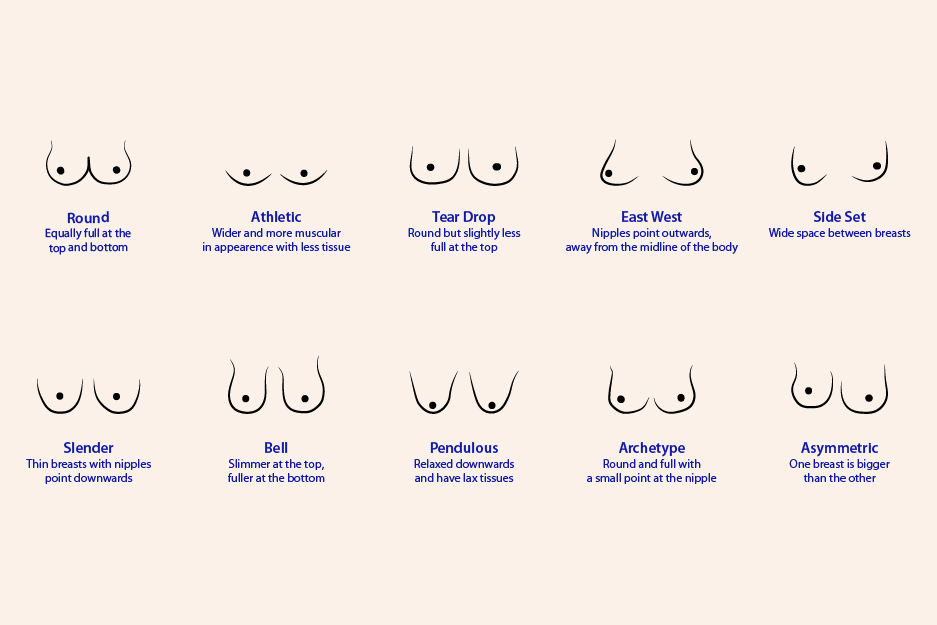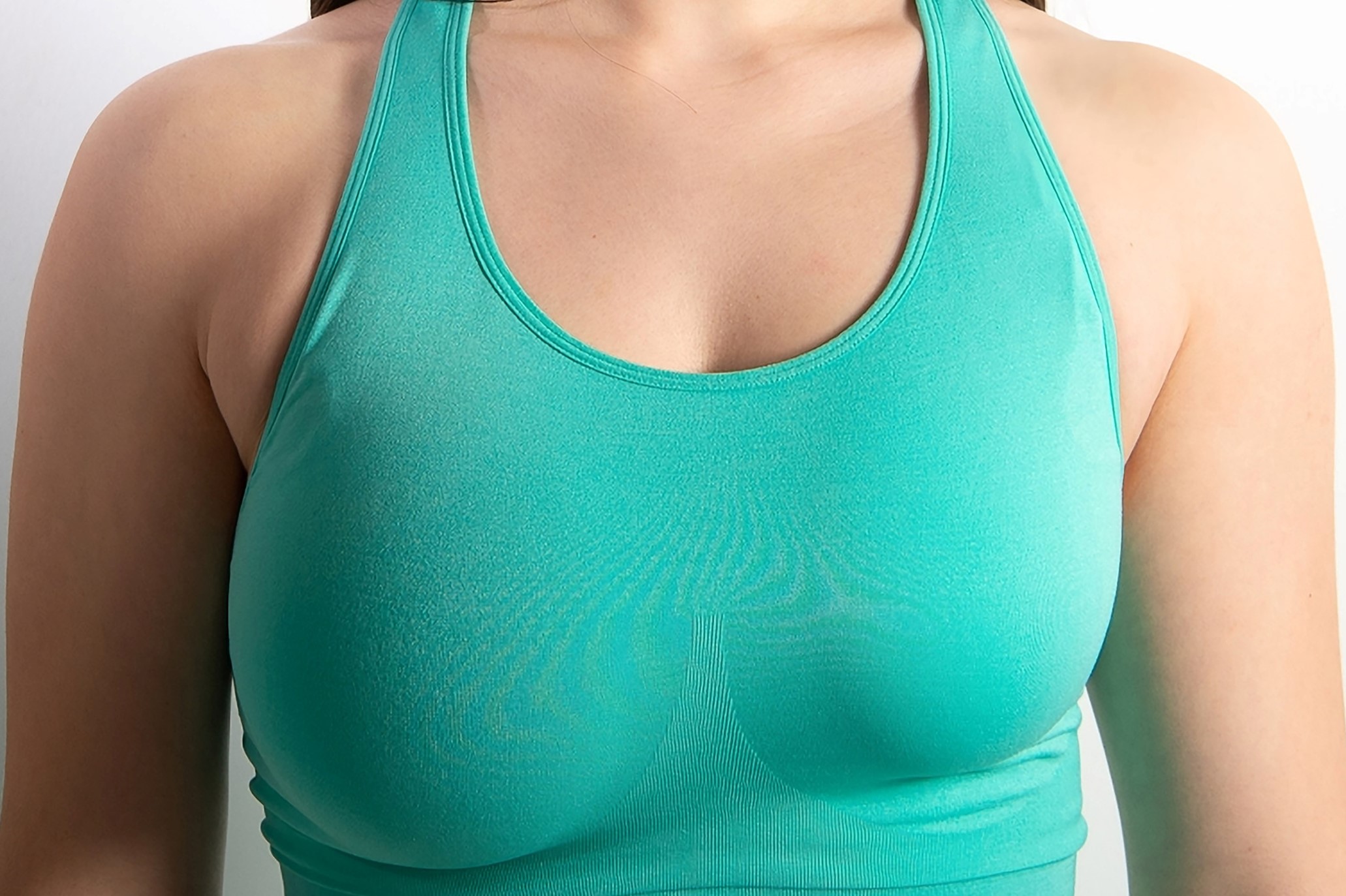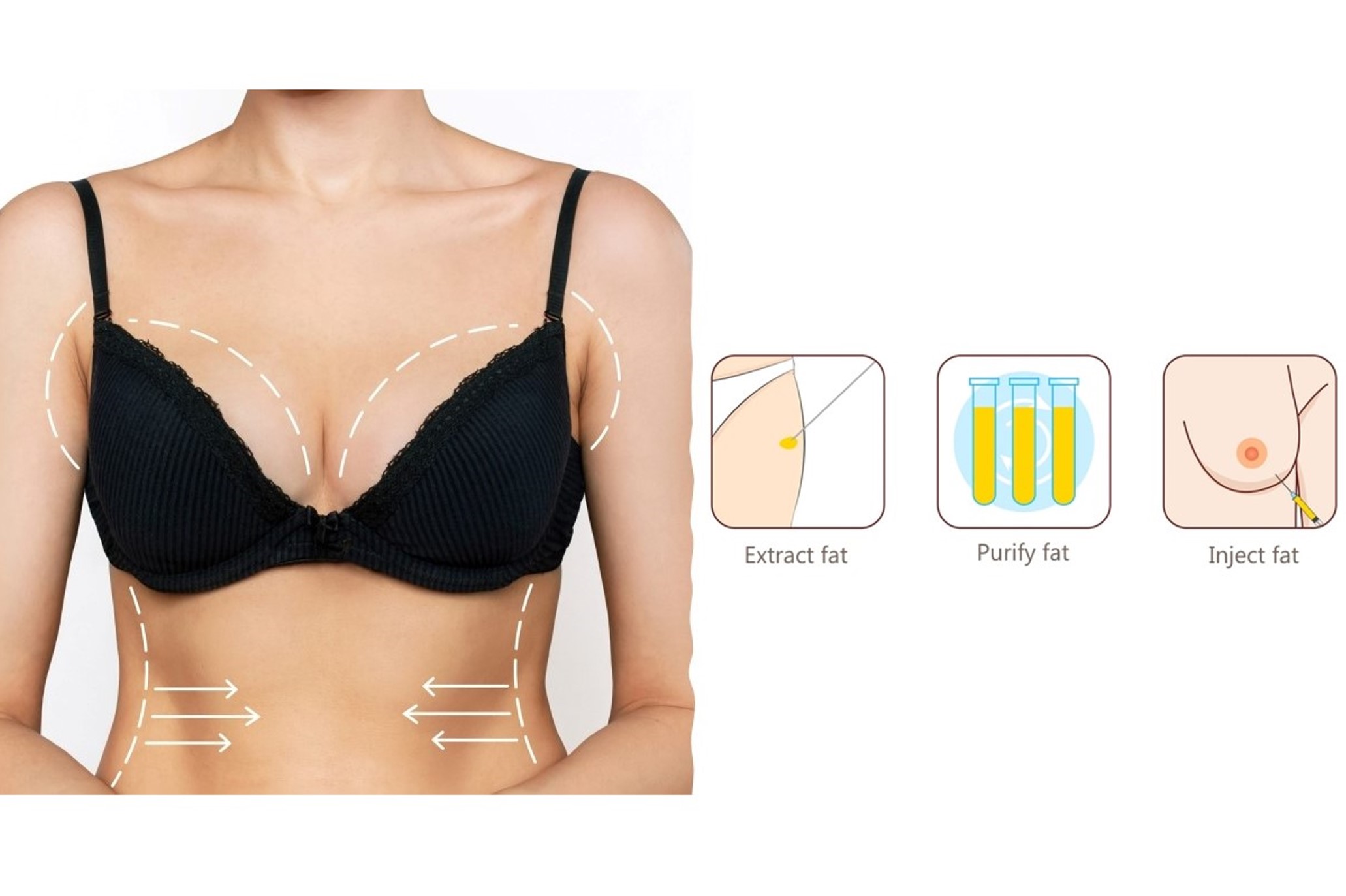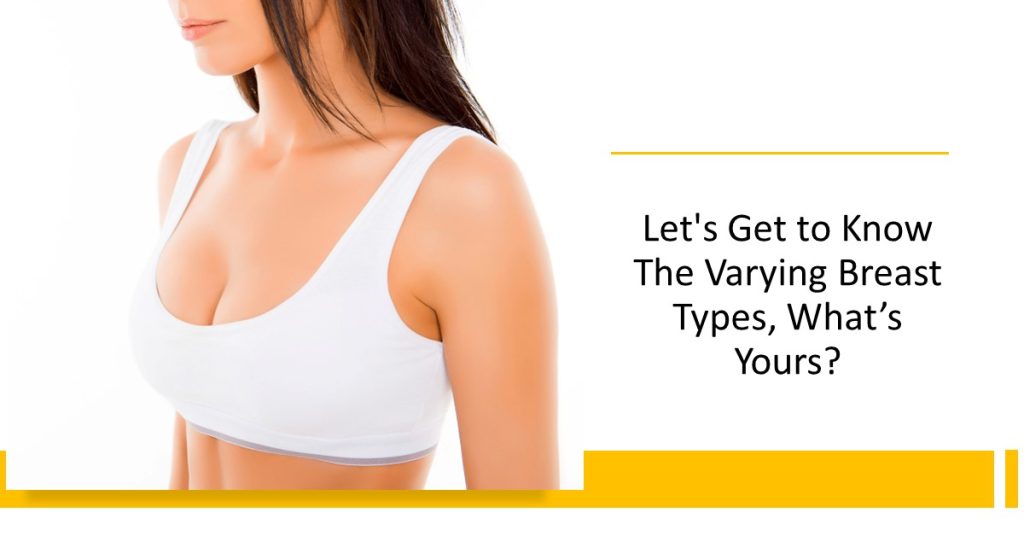Have you ever looked at yourself in the mirror and wondered, “Why do my breasts appear a certain way?” “What is my breast shape or type?” Let’s begin by stating that your breasts can be of different types, like bell shape, teardrop, or asymmetrical. You may have heard this before: breasts are sisters, not twins! This means that not every woman can have the same breast type or shape – breast type varies from woman to woman.
Here’s everything you need to know about your breast type, how your breasts undergo changes over time, and options for breast enlargement treatments.
Everyone Has A Unique Breast Type:
There are many sizes, shapes, and types of breasts. No two women have the exact same breast types. There is no type of breast that is “normal” or “best.” Every breast type is unique, and it is completely normal to have a distinctive shape or size.
What is not okay or normal is having extreme sensitivity and unexplained pain in your breasts.
If your breasts hurt constantly, your nipples bleed and secrete yellow liquid, or one breast grows suddenly bigger than the other, it is advisable to visit your doctor and get a screening.
Breast Changes Over Time:
Your breasts are made of veins, nerves, lymph nodes, fat, and milk systems. They are an important part of a woman’s reproduction. Believe it or not, your breasts started to grow when you were in your mother’s womb. By the time you are born, your nipples and milk-duct system have developed.
During puberty, breast development begins as a result of increased estrogen levels. The size of your breasts, areola, and nipples becomes more noticeable.
During menstruation, you may also observe your breasts enlarge to high levels because of estrogen and progesterone.
The density and shape of your breast are also impacted during different stages of life, like pregnancy or menopause. Some women experience nipple soreness and breast tenderness before their period. But all these symptoms disappear when the period is over. During pregnancy, progesterone causes the areolas to swell, followed by breast swelling. This happens due to the growth of the milk duct system.
So, What Are The Common Breast Types?
There are many variations in the breast type that set you apart from other women’s breast types. The following are some common breast types:
 1. The Round:
1. The Round:
Round breasts exhibit a uniform appearance having the same amount of fullness at both the top and bottom poles.
2. The Athletic:
Athletic breasts have less breast tissue and more muscle. They’re usually wider in appearance.
3. The Teardrop:
The teardrop breast type has a round shape with more fullness at the bottom pole.
4. The East-West:
You have an east-west breast type if your nipples point outwards, away from the midline of the body.
5. The Side Set:
This breast type shares a similarity with the east-west breast type. Side-set breasts gravitate far apart from the body’s midline, leaving more space between them.
6. The Slender:
You have the slender breast type if your nipples point downwards. These breasts are long and narrow.
7. The Bell Shape:
Having a narrow top and a rounder bottom, the bell shape type looks like a bell.
8. The Pendulous:
Pendulous breasts are longer in shape and have soft tissue, which is fuller at the bottom pole and shallow at the top pole.
9. The Archetype:
The archetype is considered the “ideal” breast type with a full and round shape and a small point at the nipple.
10. The Asymmetrical:
This breast type exhibits variation between breast sizes, meaning that one breast is visibly bigger than the other. This shape is completely normal unless you want to correct it.
How About The Breast Sizes?
Breast size is determined in two measurements:
1. The Band Size (Rib Cage):
The band size is measured in even numbers, such as 30, 32, 34, and 36, and is measured directly under your bust – the rib cage.
2. The Cup Size (Bust):
The cup size measures how much bigger your breasts are than the rib cage. The cup size is measured in alphabets, such as A, B, C, D, DD, E, or F.
Is There A Perfect Breast Shape?
Is there any specific breast shape that is classed as “ideal or perfect?” This is the most common question among patients who want to achieve a perfect breast shape through breast augmentation. Breast type and shape are unique for every person.
Breast shape is considered ideal when the breasts are in a ratio of 45:55, with 45% fullness in the upper pole and 55% fullness below the nipple.
Most plastic surgeons define the ideal shape of augmented breasts same as the ideal shape of natural ones.
I Have Asymmetrical Breasts, Is It Normal?

Breast asymmetry is perfectly normal in the majority of cases. A perfectly symmetrical body is the dream of every woman, but no one has it. Both your breasts can vary in location, shape, size, and volume.
It is completely normal because most women have asymmetrical breasts. If you’re not comfortable with your asymmetrical breasts, you can look for breast treatment options.
In a 2006 study, it was found that symmetrical breasts were found only in one woman in 504. Another study revealed that 62% of cases have their left breast slightly bigger than the right one.
If your one breast has noticeably grown bigger than the other, it is important to talk to your healthcare provider.
Is It True That Losing Weight Has An Effect On Breast Size?
You may have heard that when your body is calorie deficient, it starts using fat resources to get energy. Your breasts mostly contain fatty tissue (adipose). A person’s breast size can be reduced when their body burns fat.
Your genetics determines the ratio of fatty tissue in your breast. Losing weight can greatly affect breast size if your breasts have a lot of fatty tissue stored. Some women experience less reduction in their breast size because they have less fatty tissue.
Do Breast Creams Work In Enhancing My Breast’s Shape and Size?
Breast creams are non-surgical breast-enhancing options that claim to increase the size of your breasts by producing estrogen-like effects. The estrogen in breast-enhancing creams works by retaining water in the breast tissue, resulting in increased bust size.
There is no evidence that breast-enhancing creams can increase breast size because they rarely achieve drastic results..
The Methods To Enhance Your Breast, Regardless of The Type:
Whether you want an increase in bust size or reconstruction of asymmetrical breasts, the following are 2 common enhancement breast procedures:
1. Breast Implants:
![]()
Breast implants are medical prostheses that are surgical inserted into the breast tissue with the aim of achieving a fuller and contoured appearance of your breasts. Silicone breast implants, saline implants, and gummy bear implants are some breast implants used.
2. Fat Transfer:

Fat transfer for breast augmentation is another popular method that uses fats from different areas of your body to move them to your breasts.
Consult A Certified Surgeon For Your Breast Enlargement Treatment:
As you age, the volume and elasticity of your breasts are lost, causing the breast to become saggy. Choosing the right breast enlargement procedure is a daunting task. It is important to do extensive research to better understand breast augmentation. Therefore, having a consultation with an experienced and certified cosmetic surgeon is important for discussing the pros and cons of each option so that you can achieve the desired breast size and shape.
The Bottom Line:
Breasts come in different types and sizes, and all breast types are unique. Your genetics highly determines the shape and type of your breasts. There is no ideal or perfect shape of breasts because you can still look beautiful whatever your breast type is.
If you want to achieve the desired shape of your breast or re-correct your asymmetrical breast, it is important to consult an experienced and board-certified plastic surgeon. Ensure that several keys’ aspects of the breast augmentation procedure are addressed before your decision, including;
- The type and size of implant that is best suit your body frame.
- The technique or incision placement you need
- The estimated cost of your surgery
- What to expect from recovery
FAQs:
1. What are the three types of breasts?
There is a wide range of breast types that varies from one woman to another. These types include the round type (equal fullness at the top and bottom of the breast), the bell type (a narrow top and a rounder bottom), and the archetype (a full and round shape having a small point at the nipple).
2. What is the perfect breast type?
In a study published in the journal of Plastic and Reconstructive Surgery (PRS), the identification of breast shape was identified on the basis of upper breast fullness between two groups. In both groups, breast shape was rated from 1-5. The most common and ideal shape among patients with breast augmentation was the rounded “+6” shape.
Breast shape is said to be ideal when the breasts are in a ratio of 45:55, 45% fullness in the upper pole, with 55% fullness below the nipple. However, it is important to know that no breast type is perfect as everyone has a unique breast type and shape.
3. What is the most common type of breast?
The most common breast type is considered to be the “archetype,” in which your breasts have a round and fuller shape with a small point at the nipple. The archetype breast type is recognised by many of the standard breast shape.







